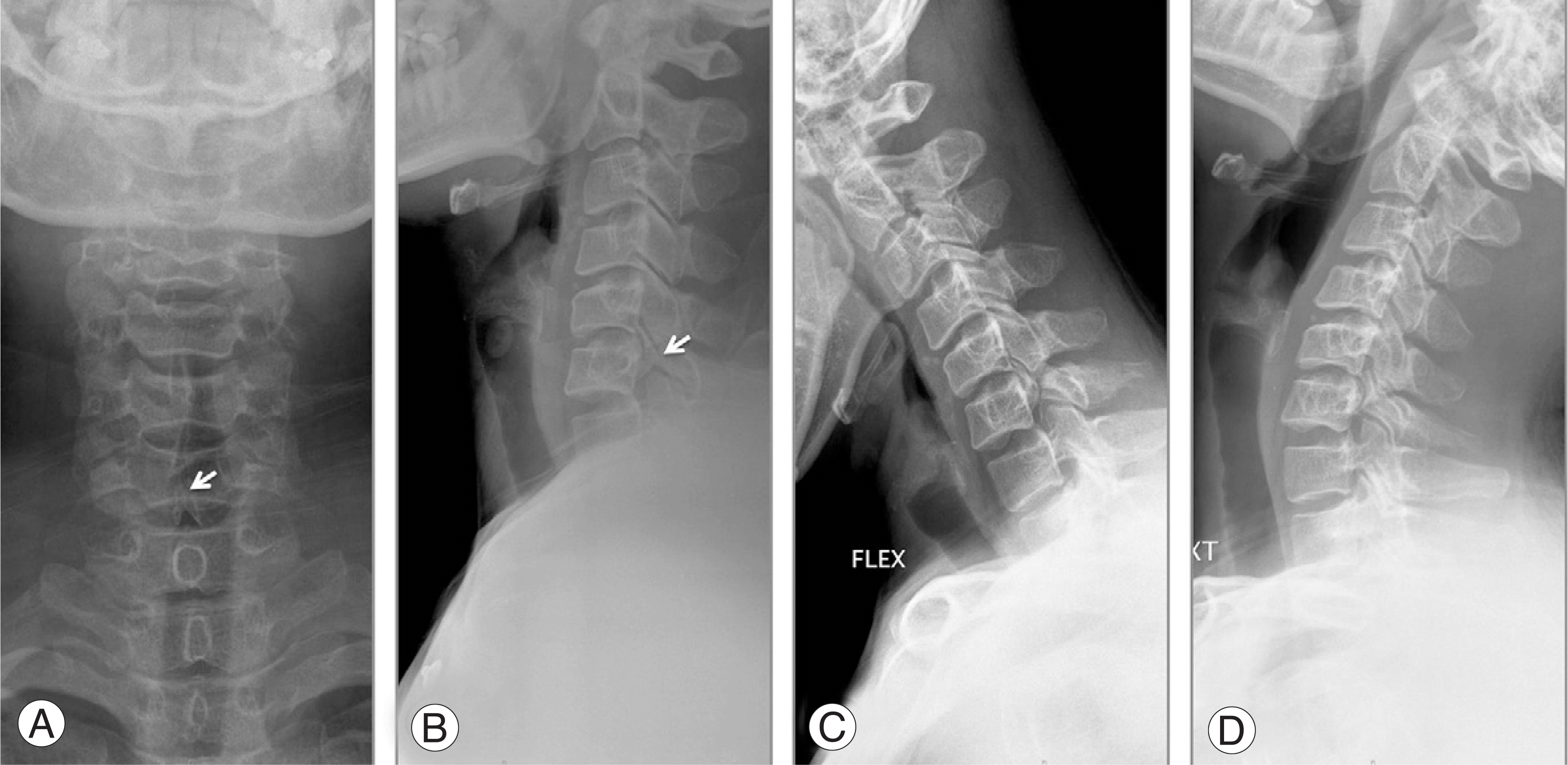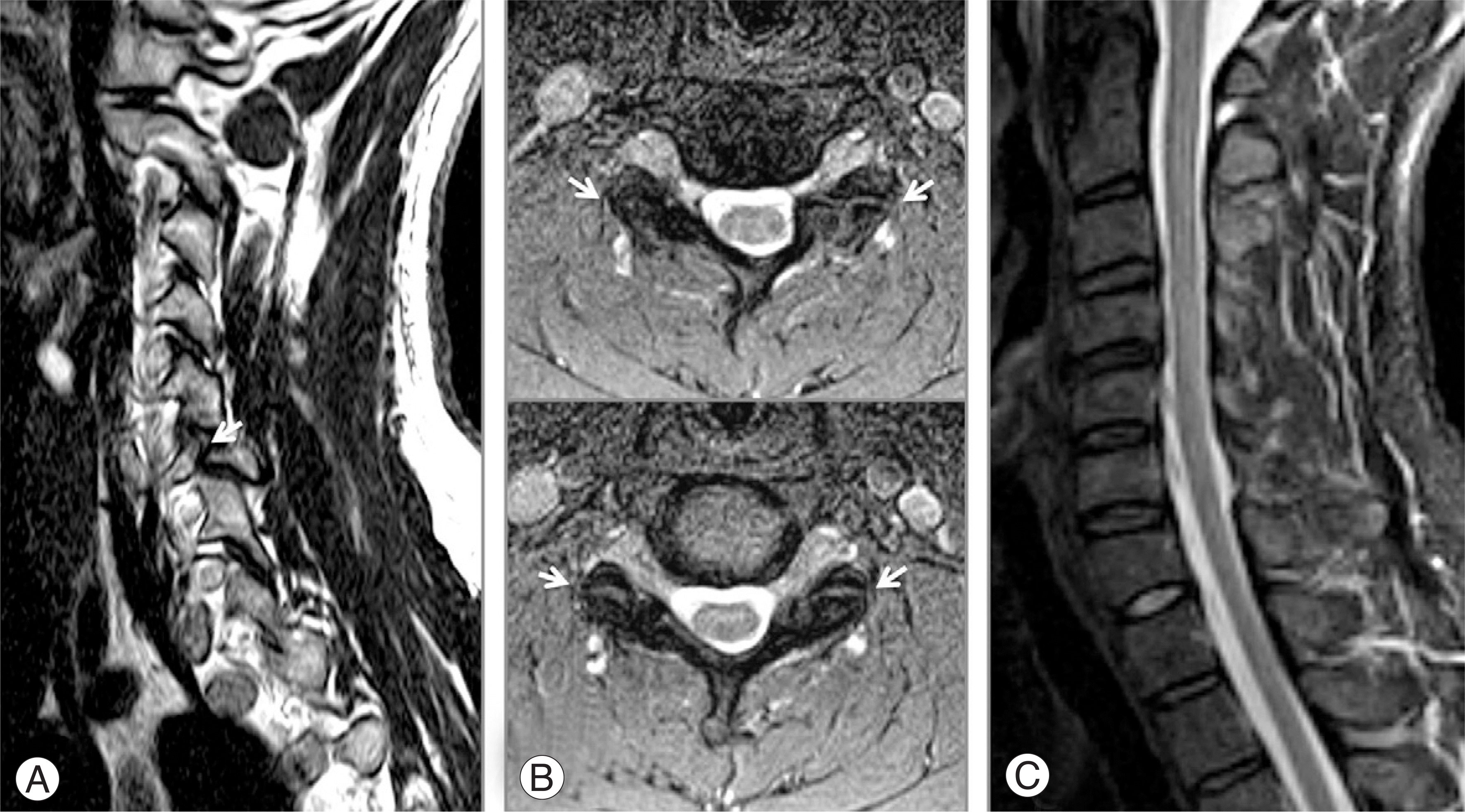Abstract
Cervical spondylolysis is defined as a corticated cleft between the superior and inferior articular facets of the articular pillar, which is the cervical equivalent of pars interarticularis in the lumbar spine. It is very important to avoid confusion with more clinically significant abnormalities, such as fracture or dislocation. This case report describes bilateral spondylolysis and associated dysplasia of C6. We describe the radiographic presentation of this anomaly, stressing the importance of computed tomography and magnetic resonance imaging for a correct diagnosis. A review of the literature on this interesting abnormality and a complete differential diagnosis are presented.
REFERENCES
1). Forsberg DA, Martinez S, Vogler JB 3rd, Wiener MD. Cervical spondylolysis: imaging findings in 12 patients. AJR Am J Roentgenol. 1990; 154:751–755.

2). Hinton MA, Harris MB, King AG. Cervical spondylolysis. Report of two cases. Spine. 1993; 18:1369–1372.
3). Morvan G, Busson J, Frot B, Nahum H. Cervical spondylolysis. 7 cases. Review of the literature. J Radiol. 1984; 65:259–266.
5). Jeyapalan K, Chavda SV. Case report 868. Congenital bilateral spondylolysis and spondylolisthesis of the fourth cervical vertebra. Skeletal Radiol. 1994; 23:580–582.
6). Redla S, Sikdar T, Saifuddin A, Taylor BA. Imaging features of cervical spondylolysis–with emphasis on MR appearances. Clin Radiol. 1999; 54:815–820.
7). Oueslati S, Zaouia K, Chelli M. Cervical spondylolysis: a case report. Acta Orthop Belg. 2006; 72:511–516.
8). Poggi JJ, Martinez S, Hardaker WT Jr, Richardson WJ. Cervical spondylolysis. J Spinal Disord. 1992; 5:349–356.

Fig. 1.
(A) Anteroposterior radiograph of the cervical spine showing spina bifida occulta at C6. (B) Lateral radiograph revealing a well-corticated defect (arrow) between the superior and inferior articular pillars, dysplastic changes of the facet. (C, D) Flexion and extension views no evidences of instability.





 PDF
PDF ePub
ePub Citation
Citation Print
Print




 XML Download
XML Download